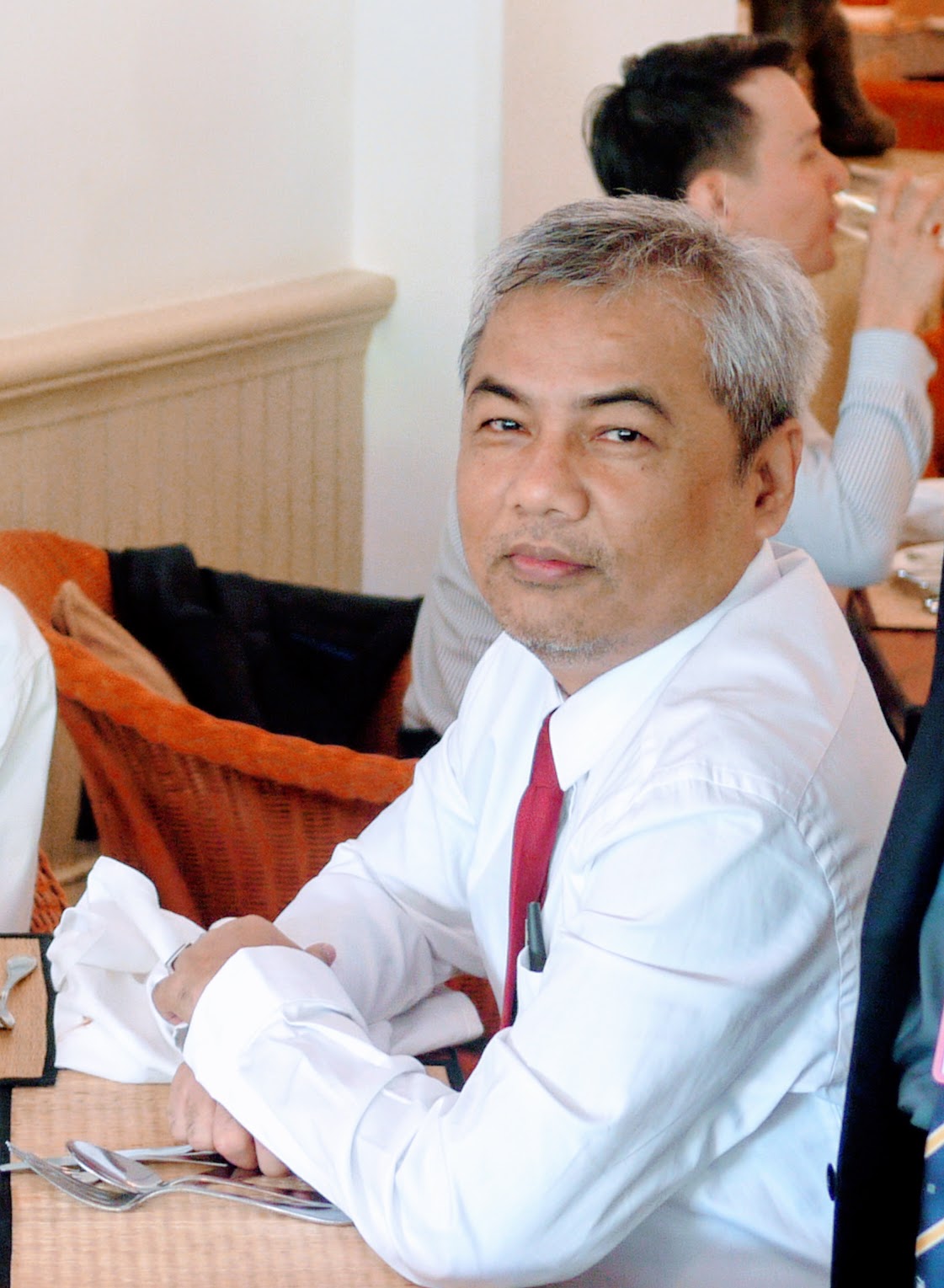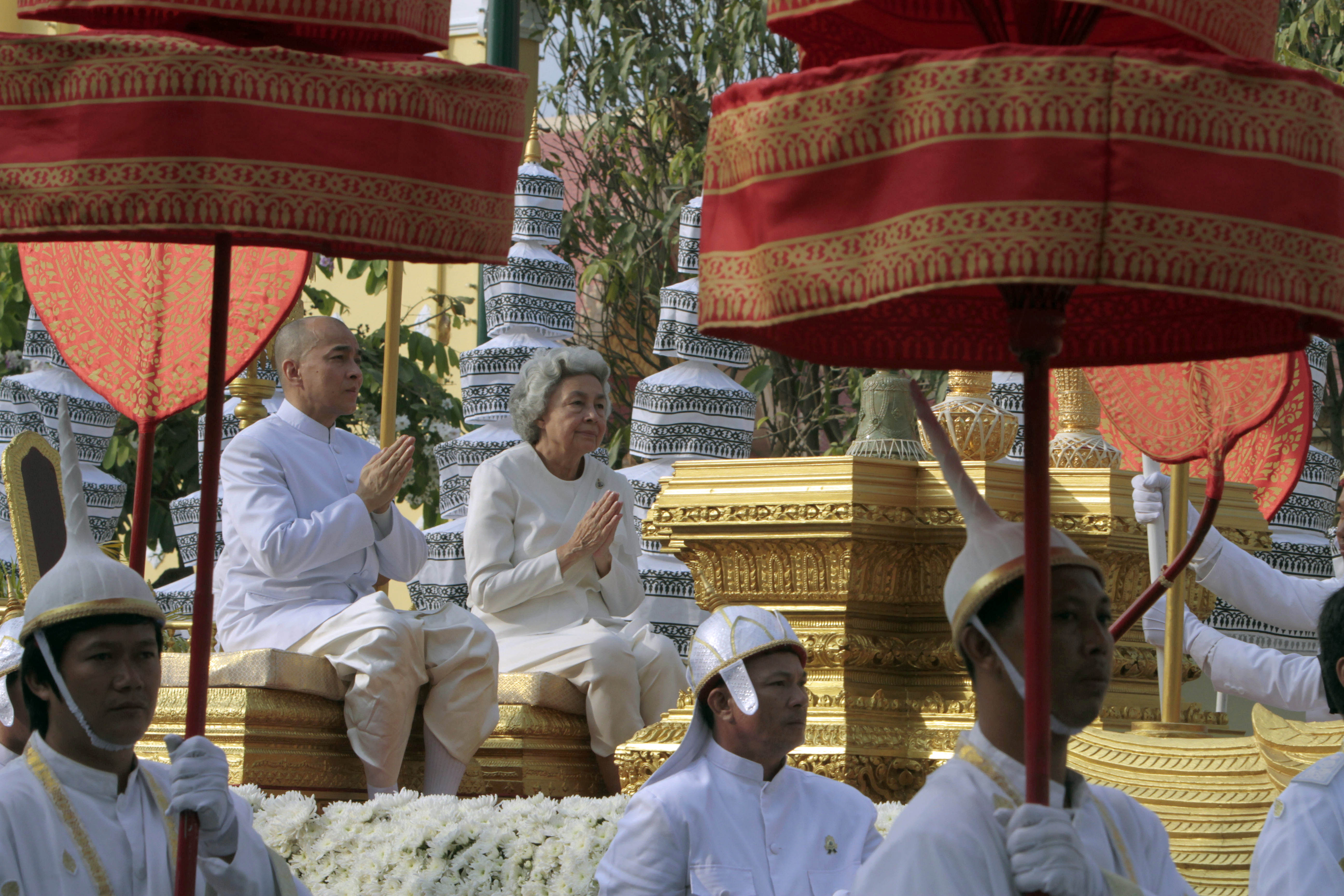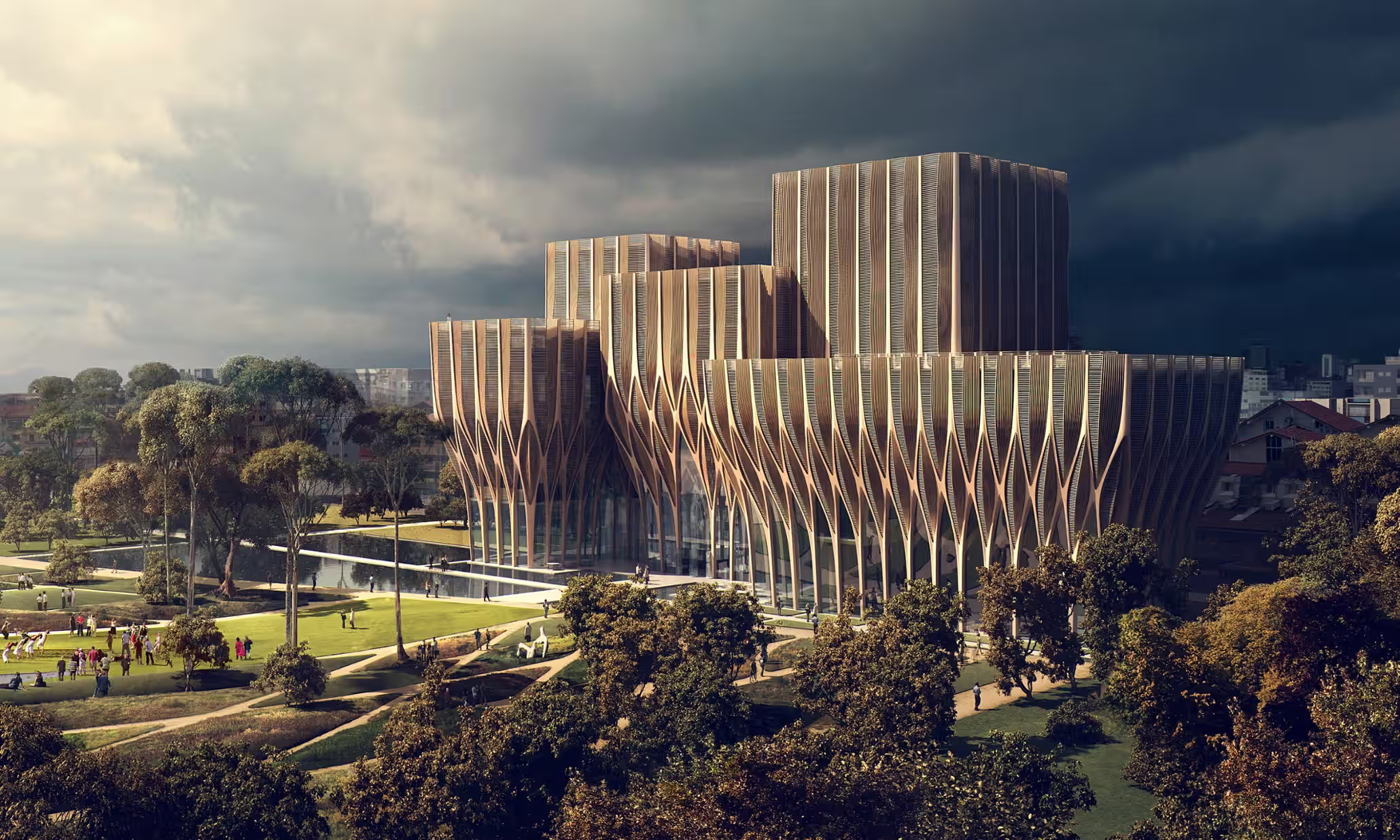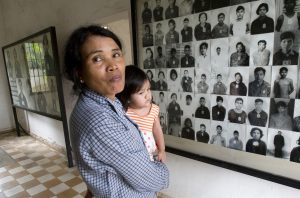On May 22 of this year, former Cambodian Prime Minister Hun Sen described how his “Win-Win Strategy” took the Kingdom from genocide to national reconciliation, to the prosperous, albeit authoritarian, present. His nearly two-hour address at the “Future of Cambodia Without Genocide” conference in Phnom Penh was part Charles de Gaulle’s “Oui c’est l’Europe,” and part Frank Sinatra’s “My Way.” Cambodian leader for nearly 40 years, from 1985 to 2023, Hun Sen ended his speech with a warning to the United States and the United Nations not to engage in “color revolutions.”
“Please do not make a third mistake in Cambodia,” Hun Sen said. “You’ve already made two.”
Sitting in the courtroom where the Cambodian government and the U.N. had successfully tried Khmer Rouge leaders Noun Chea, Khieu Samphan, and “Brother Duch,” I had to give the man I had criticized for decades his due. Not only had he captured the Khmer Rouge leaders; but he had also coerced the U.N. into sponsoring his expensive and mostly successful war crimes trials. In addition to landmine removal, Cambodia was fast becoming a world leader in the equally dangerous art of reconciliation after a genocidal conflict.
In January 2024, I received an unexpected invitation from my old friend, Youk Chhang. The executive director of the Documentation Center of Cambodia (DC-Cam) asked me to serve as “an international observer” at the “Future of Cambodia Without Genocide” conference, which was held over three days in May. I had not been to the Kingdom in a decade and readily agreed.
With the help of the Cambodian military and USAID, DC-Cam assembled just under 1,000 Cambodian government and military officials, international diplomats, human rights and international law experts, and students in the Khmer Rouge tribunal’s abandoned courtroom at a military base on the outskirts of Phnom Penh. The real VIPs at this May 20–22 event were not the diplomats or politicians. They were the 300-plus genocide survivors DC-Cam had bused in from all over Cambodia.
I dutifully attended every panel discussion and listened to speeches from Hun Sen, current Prime Minister Hun Manet (his son), U.N. genocide secretary Alice Wairimu Nderitu, genocide expert Alex Hinton, exiled Burmese human rights activist and 2024 Nobel Prize nominee Maung Zarni, U.S. war crimes officials, and many others. More interesting than what happened on the stage were my casual conversations with Cambodian students, teachers, and genocide survivors during the lunch and coffee breaks. For me, the highlight of the conference was the screening of John Pirozzi’s remarkable film, “Don’t Think I’ve Forgotten: Cambodia’s Lost Rock and Roll.”
Initially, I wondered, like a prissy academic, if a rock-and-roll film was “appropriate” for a genocide conference. I could not have been more wrong. When the courtroom went dark, the sounds of Cambodia’s Elvis, Sinn Sisamouth, filled the air as images of “The Pearl of Southeast Asia” filled the screen. Young, old, student, survivor, American, Cambodian – all were transported back to the halcyon days of the 1960s. For the next hour, the crowd swayed to the music, laughed at the innocence of the Cambodian hippies, then cried about the sad fate of their once-promising Kingdom.

The author and two survivors of the Khmer Rouge during the “Future of Cambodia Without Genocide” conference, which was held in Phnom Penh, Cambodia, on May 20-22, 2024. (Photo by Peter Maguire)
When the lights came on, many in the audience were in tears. During the Q&A, a young woman took the microphone and told the old survivors that she was crying for what they had endured. The young Cambodians’ veneration of their elders impressed me, but also made it clear that they did not see themselves as “victims” or “survivors.” They had moved on.
“Everyone has moved on with their life, you have to let go. The kids are in charge now,” Youk Chhang said to me a few days after the conference. He believes that Cambodia’s youth see their history differently from their parents and grandparents, and that is a good thing. “Don’t worry, the Khmer Rouge are part of their history. They just think about it differently. They’re not hostages of the past period like we are,” he said. “We are hostages of the Vietnam War. They’re not.”
It is no coincidence that Youk Chhang is Cambodia’s most trusted civic leader. Leading by example, he taught his nation how to forgive without forgetting. The youngest of nine children, he was 14 years old when the Khmer Rouge forced him from his Phnom Penh home at gunpoint. For the next four years, he worked like a slave, and death became as common as life. After escaping the Killing Fields, Youk immigrated to the United States as a refugee. Not content to remain in America while his countrymen starved, Youk returned to Asia to help Cambodian refugees in Thailand and the Philippines, then moved back to the Kingdom in 1992 to work as a U.N. election observer. He found his life’s calling in 1995 when the U.S. State Department’s Cambodian Genocide Project put him in charge of their Phnom Penh field office, the Documentation Center of Cambodia.

Youk Chhang, the executive director of the Documentation Center of Cambodia (DC-Cam). (Wikimedia Commons/Sir Nicholas de Mimsy-Porpington)
Youk believed that for Cambodians to forgive one another they needed to know “the truth” about what they were forgiving. It did not take long for DC-Cam’s team of researchers who had lived through the Khmer Rouge horror – Kosal Phat, Sorya Sim, Meng Try Ea, Ysa Osman, Peou Dara Vanthon, Huy Vannak, Farina So, Bun Sou Sour, and Irene Sokha (to name only a few) – to run circles around western researchers like me. They located and mapped hundreds of genocide sites, conducted remarkable oral histories with both former Khmer Rouge and their victims, and published groundbreaking books.
Because the so-called “international community” had failed Cambodia, DC-Cam established its own de facto truth commission. These efforts were not motivated by vengeance but simply sought to inform “the younger generations” of what happened under the Khmer Rouge. To Youk, DC-Cam’s greatest achievement was “touching the hearts of victims” by simply being there.
Of course, the investigations and trials created an unassailable historical record. Much more surprising and humbling to me, was the “therapeutic legalism” that I had once ridiculed had helped lead to national reconciliation. My repulsion to vague, unquantifiable concepts like “closure,” “truth,” and “healing” had blinded me to the Buddhist dimension of this specific conflict resolution, one that Tuol Sleng Prison survivor Im Chan had opened my eyes to decades earlier.
“Cambodia is a Buddhist country where retribution comes in different forms. The Buddha did not teach ‘an eye for an eye,’” I wrote in 1994. “Put simply, Buddhists believe that one must break the cycle of vengeance in order to survive.”
It was clear to me that Cambodians had taken ownership of their past in ways that human rights know-it-alls like me could not have imagined. Like Cambodia’s youth, DC-Cam had also moved forward in different directions during my absence. There were now multiple field offices, massive educational and outreach programs, and a new office in the capital. Today the DC-Cam archives are housed in an elegant Phnom Penh villa that sits at the end of a quiet, shady side street. In addition to the Khmer Rouge archives (1.7 million pages) and 100,000 hours of interviews, the facility also holds the Cambodian royal family’s archival collection.
Youk named DC-Cam’s new headquarters The Queen Mother Library after Queen Norodom Monineath Sihanouk. The beloved 88-year-old mother of King Norodom Sihamoni married former King Norodom Sihanouk in 1955. A humble woman blessed with great compassion, the Queen Mother served as the head of Cambodia’s Red Cross from 1961–1970. After the Lon Nol Coup (1970), she and her husband lived first in North Korean and Chinese exile, then as prisoners of the Khmer Rouge.
In addition to her official duties, the Queen served as one of King Sihanouk’s most important confidants during the tumultuous postwar years. “This resilient and beautiful woman overcame unimaginable hardships,” said Youk. “Her dignity and courage never faltered.” To the DC-Cam director, the Queen Mother represents the generation of Cambodian women, like his mother and sisters, who rescued the nation after genocide. “None of them signed up for a life of constant struggle, but all of them rose to challenge after challenge! They are the reason why Cambodia is moving on from the past,” he said.

Cambodia’s King Norodom Sihamoni, left, and Queen Mother Norodom Monineath pray on a chariot as some of the ashes of late former King Norodom Sihanouk are carried to the Royal Palace in Phnom Penh, Cambodia, February 7, 2013. (AP Photo/Heng Sinith)
Many of the original DC-Cam researchers Youk trained have also moved on. Some are now in the private sector, and others work for the government. Former DC-Cam researcher and coauthor of the powerful book “Victims and Perpetrators,” Sorya Sim looks back on his time there as “the toughest, most fulfilling job” he ever had. After DC-Cam, he earned his law degree, served as an investigator for the Khmer Rouge tribunal, and today works as a lawyer and arbitrator. DC-Cam alumnus Huy Vannak, the author of “Bou Meng: A Survivor From Khmer Rouge Prison S-21,” is secretary of state for the Ministry of Interior and president of the Union of Journalist Federations of Cambodia. He credits DC-Cam and Youk Chhang with putting him and others on a path to success.
“Youk sacrificed everything for the survivors, Cambodia, and history,” he said. “ It is hard to find people like Youk who are 100 percent committed to a cause.”
Working at DC-Cam taught him the value of focus and knowledge: “Youk encouraged all of us to pursue advanced studies but left us free to choose whatever it was that we wanted to be. He taught us what we needed to do to build a better life, not just repeat the past, but find a better future.” Both Sorya Sim and Huy Vannak said that their children do not talk much about the Khmer Rouge. Instead, they look forward to college and careers.
Today, Youk faces another daunting challenge. While in Iraq in 2005, compiling evidence of Saddam Hussein’s atrocities, he met British-Iraqi architect Zaha Hadid. He immediately knew that she was the right person to design a museum for the Cambodian people. “I wanted a woman architect because the majority of the Khmer Rouge survivors, 65 percent, are women,” said Youk. “Because the innocent victims of war crimes always include significant populations of women and children, the time is long overdue for a woman to lead such a commemorative design effort to acknowledge and illuminate their collective loss.”
There was only one problem. “Dame Zaha Hadid” was a Stirling Prize winner (Royal Institute of British Architects’ highest prize for excellence in architecture) and one of the busiest, most expensive, and sought-after architects on earth. When Youk humbly asked her if she would design a building for Cambodia, Hadid asked him bluntly, “How much money do you have?” Youk replied, “Zero,” and she said, “I can’t do it.”
Never one to quit, the Cambodian knew that Zaha Hadid liked Angkor Wat and Cambodian folktales, so he continued to write her and send her pictures and folktales. Six years after their first meeting, the architect asked Youk Chhang to send his idea about the memorial that he envisioned. “I wanted a national treasure for the Cambodian people that was historically significant,” said Youk. “Not just a symbol of Cambodia’s break from three years, eight months, and 20 days of genocide, but a celebration of our proud history that stretches all the way back to Prince Jayavarman II who established the great Khmer empire in the 9th century.”
“Youk Chhang’s vision is inspirational,” Zaha Hadid later said. His plan called for beauty and an optimism “to heal and reconnect a country, with the Documentation Center of Cambodia being key to that process.” When Youk Chhang was invited to London to discuss the project, he was greeted by Hadid and 14 architects. The firm officially accepted the project and sent a team to Cambodia to learn more about the country. “They never mentioned or asked a question about the cost,” said Youk.
In 2014, after two years of work, Zaha Hadid and her firm unveiled conceptual drawings of five intersecting wooden buildings situated on fifteen acres in Phnom Penh. The buildings will house a library holding DC-Cam’s documents, a human rights and genocide graduate school, a research center, a media center, and an auditorium. They called it Sleuk Rith, which translates to “the power of leaves,” referring to the religious texts Buddhist monks wrote on palm leaves, many of which were destroyed by the Khmer Rouge.

The south facade of the Sleuk Rith Institute, as designed by the architect Zaha Hadid. (Sleuk Rith Institute)
Now that they had a design, Hadid asked Youk to join her in New York City to help her make the case to UNESCO that Sleuk Rith should be designated a World Heritage Site. Afterwards, Hadid planned to travel to the Middle East to secure the funds for the project. In 2016, as Chhang was preparing to travel to New York to meet Hadid, the architect died of a heart attack.
Despite the delays and financial questions, Youk is nonplussed. He has seen much worse. To him, the construction of this national treasure, now also called the Queen Mother Library, is too important to Cambodia not to be built the way he and Hadid envisioned it. “Now Youk has moved on to the library,” said Huy Vannuk in our final interview. “I think that this is important for Cambodia. Cambodia is not a fragile society. We need to define the best way for our long journey.”
When I asked Vannak if he worried about Cambodia getting caught in the middle of a tug-of-war between China and the U.S., he shrugged. “We messed up with the superpowers in the past and the results turned out very bad, from colonialism to civil war, to genocide, to more civil war – Cambodians are responsible for all of it. If you are involved in the conflicts of the superpowers, you will fall into the trap of war and conflict. In the future, we will try to have good relations with the superpowers, but also with our neighbor countries.”
Today, a new generation of Cambodians, “unstained by the past,” look to the future with optimism. A China-led, techno-authoritarian future is not what I would have wished for when I first visited the Kingdom 30 years ago. However, with America suffering from disputed elections, Big Tech authoritarianism, and rudderlessness abroad, who am I to judge?
Less than a week after I left Cambodia my worst instincts were confirmed when American Secretary of Defense Lloyd Austin and CIA director William Burns both made back-to-back, eleventh-hour whistle-stop visits to the Kingdom. Their panicky efforts to recapture U.S. influence in Southeast Asia are futile. It is too late. America’s growing irrelevance was underscored when exiled Burmese civil rights activist Maung Zarni called for a Cambodian-led “Phnom Penh Peace Plan” to end his nation’s civil war. This plan, however, comes with a caveat, Zarni does not want any Western political actors involved. “The West excels in destabilizing the world and inflicting immense suffering in its tracts globally,” he said. “We in Southeast Asia know better.”

































